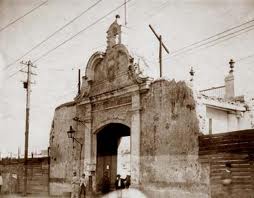Royal Shipyard of Havana
The Royal Arsenal of Havana was located South East of the Campo de Marte and played a prominent role in Spanish shipbuilding in the 18th century. In total, seventy-four warships were built in Havana during this century.[1]
Royal Shipyard of Havana
History[edit]
The shipyard had a minor role in relation to the Armada de Barlovento.[a], but it is with the arrival of Juan de Acosta, considered "one of the most prominent figures in Spanish shipbuilding", in 1717 as lieutenant of the Company of Seafarers and appointed captain of the Maestranza del Arsenal in 1722 that Havana begins to stand out as a shipyard. He will supervise, between 1724 and 1740, the construction of twenty-three vessels, including the ships San Juan and San Lorenzo and, between 1732 and 1736, the construction of the ships Africa (San José), Europa (Nuestra Señora del Pilar), Asia (Our Lady of Loreto, 1735) and America (Our Lady of Belén).1 Later, with the dissolution of the Armada de Barlovento in 1748, the Veracruz naval base was transferred to Havana.4
From 1715 to 1759, a third of Spanish ship production was from the Havana shipyard. In 1735, its expansion, in the same port, meant an increase in construction capacity.
Total production between 1765 and 1789 reached sixty-two ships, among them 19 ships of the line, note 1 five of which were first class, that is, with more than 100 guns —Santísima Trinidad, Mejicano (San Hipólito), Conde de Regla, Real Carlos, San Hermenegildo— and fifteen frigates.
Production[edit]
In the first decade of the 17th century, the Spanish Crown ordered the construction of 7 galleons destined for the windward navy. Their construction was in charge of Captain-General Don Juan de Borja Enríquez, who in April 1610 officially informed the King that he had already built 5, of which he said that they were completely finished and if it had been necessary they could leave in a month. In 1737, the Royal Trade Company of Havana was founded, among whose obligations was to build ships for the war and merchant navies, assuming control of the Arsenal of Havana. In this way, the Royal Company contributed significantly to the increase in the activity of the shipyards with the construction of warships for the Spanish Navy and, consequently, to the maintenance of the naval tradition in Cuba.
Royal Shipyard of Havana
Q61861374


